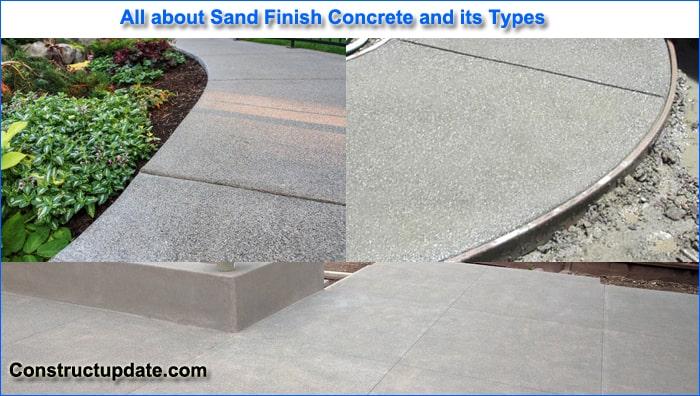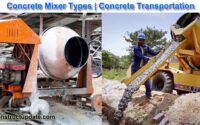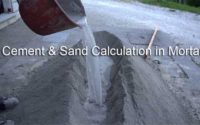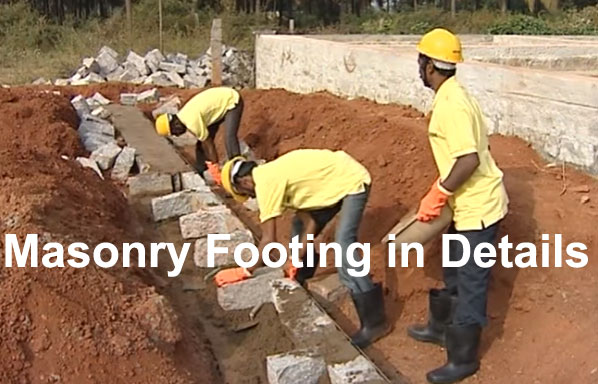What is Sand Finish Concrete | Types of Concrete Finishes | How Can Concrete Get A Sand Finish
What Is a Sand Finish Concrete?
Similar to concrete with a standard finish, concrete with a sand finish has a more polished appearance. Mix 1 part cement with 2 parts sand and 3 parts gravel to create sand-finished concrete. Water is gradually added after all of the dry ingredients have been completely combined.
Because of its sand-textured look and resemblance to the hard sand found on beaches and seashores, sand-finish concrete is also known as “sand-washed finish concrete.“
In this article, we will try to understand what is sand finished concrete and what are its types.
What Functions Does the Sand Finish Concrete Serve?
The texture of sand-finished concrete is outstanding. It is less abrasive, gritty, and slippery all at once, therefore it is more frequently used in the backyard and by the pool.
In addition, sand finish concrete is available in many other designs and patterns, such as squares, checkerboards, diamonds, and many others. Sand-washed concrete is very pliable and adaptable. Additionally, it makes your home smoother and cleaner, which enhances its appeal.

Types Of Concrete Finishes
Sand finish concrete includes the following concrete types:
- Smooth Trowel Concrete Finish
- Stamped Concrete Finish
- Normal Concrete Finish
- Broom Concrete Finish or Scratched Concrete Finish
- Salt Finish Concrete
- Aggregate Appearance Concrete Finish
- Terrazzo Concrete Finish
- Rosette Concrete Finish or Swirl Concrete Finish
- Sandblasted Concrete Finish
- Colour Finish Concrete
1. Smooth Trowel Concrete Finish
The concrete surface is coated with either cement paste slurry or cement dust, which is then continually pressed and dragged to maintain a smooth appearance all around it.
They are typically used in locations like pathways, verandas, restrooms, and other areas with easy water drainage and low water permeability. Additionally, this type of concrete has a very smooth and lustrous texture.
2. Stamped Concrete Finish
In this stamped concrete finish, the top layer of the concrete is softly pressed with a variety of plates and rubber pads, leaving the stamp on it after a few hours to resemble tiles, blocks, and paving stone.
3. Normal Sand Finish Concrete
This type of concrete is frequently tamped and vibrated with wooden tampers before being placed over the formwork and on the ground. It results in a naturally finished concrete surface that is neither very smooth nor very rough.
4. Scratched or Broom Concrete Finish
In this type of finish concrete, the first setting of the stage of concrete is scratched with the help of a broom, wire brush, and trowel. They consequently impart a very harsh and rough texture to the surface. The broom is typically used to prevent slick pathway surfaces in homes and on highways. It is made of bamboo wood that has been coarsely cut. It also creates a solid bond between the base surface for mortar application and the tiles.
5. Salt Finish Concrete
This kind of concrete finish is made by first evenly distributing wet, fresh concrete over the surface, followed by inserting crystals made of big lumps and slats inside the concrete surface. These ingrained salts are eliminated from the concrete using water jetting so that it can harden. The salts create a depression over the implanted region as a result, giving the concrete a rougher, more natural texture.
6. Aggregate Appearance Sand Finish Concrete
This kind of concrete has a finish similar to terrazzo, except it uses aggregates rather than marble chips. The aggregate is first deeply implanted over the concrete surface using a power float.
Other options for giving the concrete surface a shiny, glossy appearance include chemical treatments or paint. Granite, basalt, quartz, and other stones with aesthetically attractive textures are typically used.
7. Terrazzo Concrete Finish
At this type of concrete, grey or white cement blended with variously coloured marble chips replaces the coarse aggregate in a ratio of 1:1.25 or 1:2. After placement and hardening, concrete chips are exposed by grinding, and the surface is then polished with a more suitable chemical procedure or paint to produce a shiny and glossy finish.
8. Rosette Concrete Finish or Swirl Concrete Finish
Any form of finished concrete has a level and smooth surface, however semi-circular arc intersections cause the surface of this kind of concrete to undulate. This concrete surface was given an undulating appearance by using the right technique to press down on the recently slumping concrete with a trowel.
9. Sandblasted Concrete Finish
This method is used to sandblast the surface after the concrete has dried, using a pressurized blast of mix and air. so that the texture of the concrete is rough.
10. Color Concrete Finish
In this type of concrete, colour tinting is applied either during the curing process or by spraying the concrete’s top surface, which is subsequently smoothed with a trowel. There are powder variations of every pigment colour.
To give the concrete surface a colourful, artistic feel and various hues to make it more appealing, use concrete stains and concrete dyes. Colors have been added, but it’s still concrete.
How Can Concrete Get A Sand Finish?
It is easy to get concrete with a sand wash finish for patios and pool decks. Cement and common sand cannot be combined to create a washed-finished surface in a mortar. Finishes can be made with concrete sand. In contrast, mortar sand is utilised to add texture to surfaces by combining it with water and cement.
A sort of sand wash that is generally recovered from the earth’s interior and stone grits is concrete sand. The sand is cleaned after extraction to remove salt, clay, dust, and other impurities.
For concrete with a sand wash finish, M20 grade proportion suggests (1:1.5) or M-grade concrete, which is stronger. Use a trowel to gradually add water after completely combining all of the dry ingredients to create concrete of the M20 grade. After that, use high water pressure to thoroughly wash the concrete to get rid of the cement paste on top.




